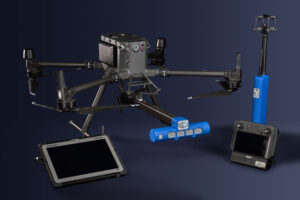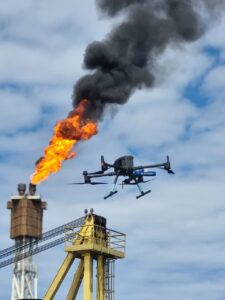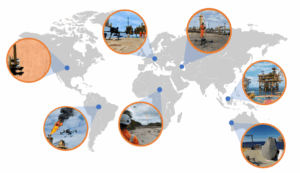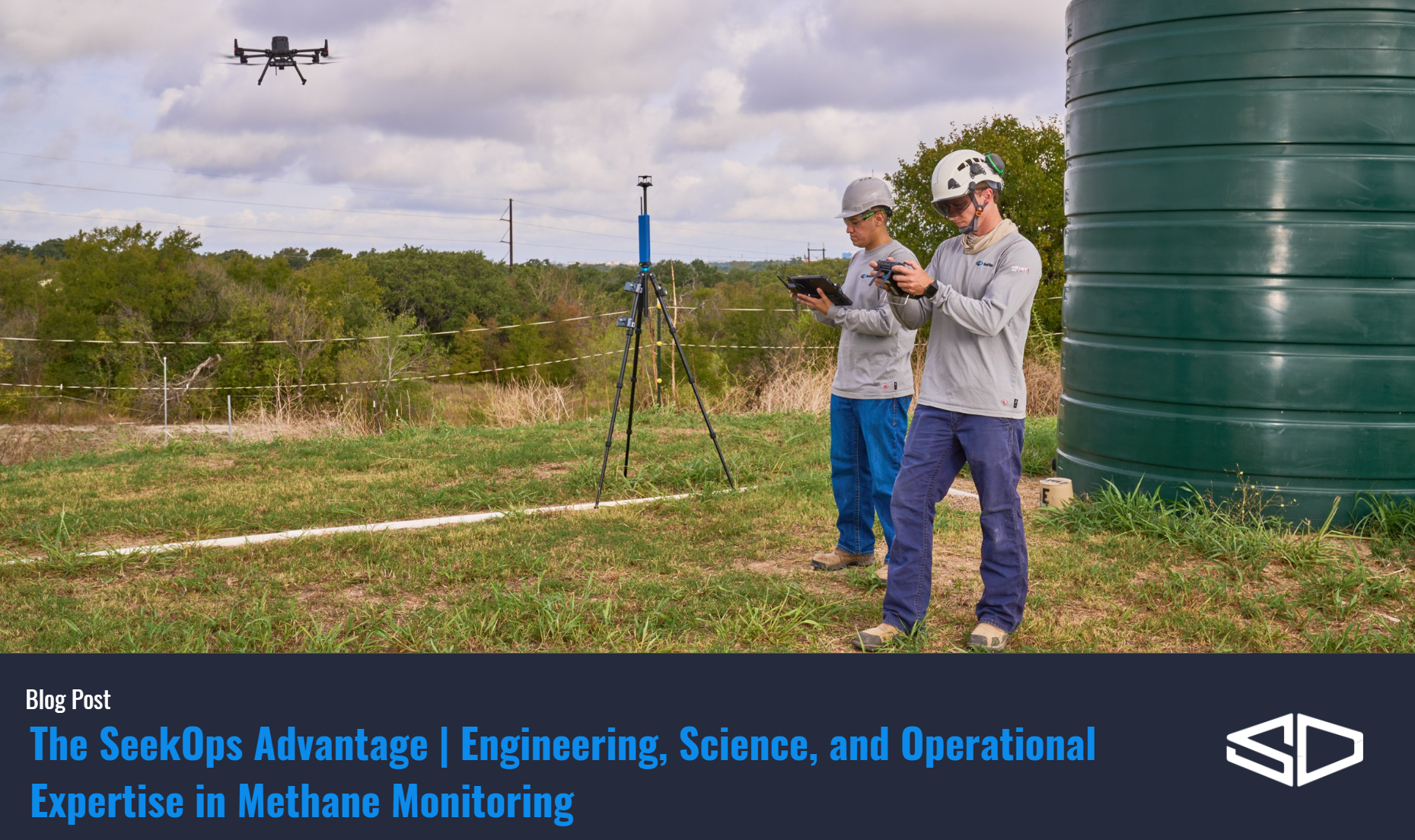Discover how SeekOps combines advanced engineering, scientific rigor, and operational know-how to deliver reliable, field-validated methane monitoring solutions worldwide.
Read time: 5 minutes
Why Integration Matters
In methane emissions monitoring, success doesn’t come from technology alone. It’s the integration of engineering design, scientific validation, and operational execution that sets SeekOps apart. Each survey requires not only advanced hardware but also the methodologies to use it effectively and the field expertise to adapt to real-world conditions.
SeekOps was built on this integration. From the earliest development of the SeekIR sensor at NASA’s Jet Propulsion Laboratory to today’s global deployment across six continents, the mission has always been the same: to combine the best of science and engineering with practical, real-world operations that make data both reliable and actionable.
Engineering Excellence – Technology Built for the Field
At the heart of SeekOps is the SeekIR sensor, a lightweight, high-sensitivity methane detector capable of measuring emissions down to parts per billion. Its origins in NASA’s Mars Curiosity Rover program demanded extreme durability and precision, and that legacy continues today.
But engineering doesn’t stop at the sensor. SeekOps systems are drone-agnostic, ruggedized, and efficient. This engineering foundation ensures that every mission can be executed safely, efficiently, and with high-quality data capture whether onshore, offshore, or in complex industrial environments.

Scientific Rigor – Measurement You Can Trust
Technology alone isn’t enough; it must be scientifically validated. That’s why SeekOps emphasizes continuous field validation and peer-reviewed collaboration. Our methods are grounded in spectroscopy, fluid dynamics, and controlled release testing, ensuring that every measurement is backed by science, not assumption.
SeekOps technology has been validated in:
Blind controlled release trials such as METEC and landfill experiments.
Independent academic research comparing technologies for detection and quantification.
Peer-reviewed publications and global methane trials, including TADI 2024 and inter-comparison studies.
This scientific rigor translates into uncertainty reporting, confidence intervals, and reconciliation analysis, giving operators not just numbers, but numbers they can stand behind in regulatory and ESG contexts.
Operational Expertise – Delivering in the Real World
Even the best sensor and methods fall short without operational excellence. That’s why SeekOps invests heavily in training, safety, and adaptability. Our field teams are experienced in working alongside ongoing operations without disrupting production or safety protocols.
Operational expertise means launching drones from helidecks, supply vessels, or tight industrial installments, adapting flight plans in real time to shifting winds or unexpected hazards, and ensuring consistency by repeating flight paths for comparative analysis.
By uniting engineering and science with field know-how, SeekOps ensures that technology translates into reliable performance under the toughest conditions.

The Advantage in Action
SeekOps’ combined approach delivers tangible value to operators:
Regulatory Compliance – Data that meets international standards like OGMP 2.0, EPA rules, and EU Methane Regulation.
Operational Efficiency – Faster survey turnaround with live GCS streaming and FASTR reporting.
Trusted Transparency – Uncertainty and reconciliation included in every report.
Global Reach – Proven deployments across North and South America, Europe, the Middle East, Africa, Asia, and Australia.
From oil and gas fields in Texas to offshore rigs in the North Sea, from tropical biogas plants to desert well pads, SeekOps delivers consistent, high-quality results that operators can act on with confidence.

Building a More Sustainable Future
The climate challenge demands not only innovation but also collaboration. SeekOps works hand-in-hand with operators, regulators, and research institutions to ensure that emissions monitoring evolves with industry needs and global climate goals.
By uniting engineering ingenuity, scientific rigor, and operational expertise, SeekOps empowers industries to measure, manage, and ultimately reduce methane emissions. It’s not just about technology; it’s about making emissions data actionable in the pursuit of a more sustainable energy future.
Ready to see the SeekOps Advantage for yourself?
Request a Demo today and discover how SeekOps can help you achieve your emissions monitoring and sustainability goals.
References
Webster, C. R. (2005). Measuring methane and its isotopes 12CH₄, 13CH₄, and CH₃D on the surface of Mars with in situ laser spectroscopy. Applied Optics, 44(7), 1226–1235. https://doi.org/10.1364/AO.44.001226
NASA (National Aeronautics and Space Administration). (2019). Methane Detector Sniffs Out Leaks. NASA Technology Transfer Program. https://spinoff.nasa.gov/Spinoff2019/ps_7.html
Ravikumar, A. P., Sreedhara, S., Wang, J., et al. (2019). Single-blind inter-comparison of methane detection technologies – results from the Stanford/EDF Mobile Monitoring Challenge. Elementa: Science of the Anthropocene, 7(1), 37. https://doi.org/10.1525/elementa.373
Corbett, A., & Smith, B. (2022). Study of a Miniature TDLAS System Onboard Two Unmanned Aircraft to Independently Quantify Methane Emissions from Oil and Gas Production Assets and Other Industrial Emitters. Atmosphere, 13(5), 804. https://doi.org/10.3390/atmos13050804
Smith, B. J., Buckingham, S., Touzel, D., et al. (2021). Development of Methods for Top-Down Methane Emission Measurements of Oil and Gas Facilities in an Offshore Environment Using a Miniature Methane Spectrometer and Long-Endurance UAS. SPE Annual Technical Conference and Exhibition, Dubai, UAE. https://doi.org/10.2118/206181-MS
Tavner, C. A., Touzel, D. F., & Smith, B. J. (2021). Application of Long-Endurance UAS for Top-Down Methane Emission Measurements of Oil and Gas Facilities in an Offshore Environment. SPE Offshore Europe Conference and Exhibition, Virtual. https://doi.org/10.2118/205467-MS
Hossian, R. I., et al. (2024). A Controlled Release Experiment for Investigating Methane Measurement Performance at Landfills. Environmental Research and Education Foundation (EREF). https://erefdn.org/eref-funded-study-highlights-advances-in-measuring-landfill-methane-emissions
Dawson, K. W., Smith, B. J., Stocker, I., & Evans, P. (2024). Assessing the Application of Drone TDLAS Methane Emissions Monitoring Technology in the Intertropical Convergence Zone Using Machine Learning. APOGCE 2024. https://doi.org/10.2118/221317-MS
Gully-Santiago, M. A., Smith, B., Frederick, T., Dawson, K., & Elliott, D. (2025). Results and Learnings from the TADI 2024 Methane Quantification Trial. SPE Europe Energy Conference and Exhibition, Vienna, Austria. https://doi.org/10.2118/225634-MS


